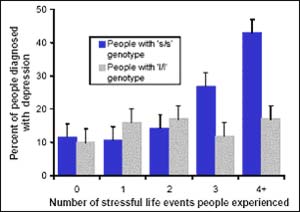Latest News

Metal detectors pass safety test on pregnant women
Hand held metal detectors (HHMDs), such as those used for security checks in airports, do not cause harmful heating or nerve stimulation in pregnant women, according to research published today (22 July 2003) in the Institute of Physics journal Physics in Medicine and Biology. The role of the Center for Devices and Radiological Health (CDRH), Maryland, is to ensure the safety of radiological products, so electromagnetic wave emitting HHMDs were an obvious choice for them to investigate, especially fo

A breakthrough in heat transfer technology
A revolutionary breakthrough in heat transfer technology that could improve process productivity and reduce energy consumption and waste, is being developed by Ashe Morris Ltd thanks to a £100,000 investment from NESTA (the National Endowment for Science, Technology & the Arts), the largest source of early stage funding in the UK.
Heat exchangers are used in many industrial, commercial and domestic applications and can be used to add or remove heat during chemical and biological manu

Anti-inflammatory drugs lower risk of Alzheimer’s
Non-steroidal anti-inflammatory drugs (NSAIDS) lower the risk of developing Alzheimer’s disease, claim researchers in this week’s BMJ.
The authors identified 15 studies published between 1996 and October 2002 that examined the role of NSAID use in preventing Alzheimer’’s disease. They carried out three separate analyses to quantify the risk of Alzheimer’’s disease in NSAID users and in aspirin users and to determine any influence on duration of use.
Their results show that N

Newly identified plant proteins may shed light on the evolutionary process
A group of nuclear-envelope-associated proteins have been found in a plant for the very first time by a team of researchers at Ohio State University. Led by Professor Iris Meier, this new finding show that these proteins (Plant RanGAP and MAF) have in common a nuclear envelope-targeting domain which is unique to plants and distinctly different from sequences found in known animal nuclear envelope proteins.
This finding is significant because it implies that a funadamentally different nuclea

Changes in deep brain tissue signal an increased risk for strokes
Changes in the brain’s white matter, a common occurrence among the elderly, increase a person’s risk of having multiple strokes, according to a report in today’s rapid access issue of Stroke: Journal of the American Heart Association.
White matter is the inner part of the brain, through which most of the brain’s nerve connections pass. Leukoaraiosis – the scattered loss of white matter in the brain – is particularly associated with strokes caused by blockages in small arteries deep i

Gene more than doubles risk of depression following life stresses
Gene more than doubles risk of depression following life stresses
Among people who suffered multiple stressful life events over 5 years, 43 percent with one version of a gene developed depression, compared to only 17 percent with another version of the gene, say researchers funded, in part, by the National Institute of Mental Health (NIMH). Those with the “short,” or stress-sensitive version of the serotonin transporter gene were also at higher risk for depression if they had been ab











